One of the First Feminists in the United States Julia Ward Howe, little known today except as author of The Battle Hymn of the Republic, was famous in her lifetime as a poet, essayist, lecturer, reformer and biographer. She worked to end slavery, helped to initiate the women’s movement in many states, and organized for international peace – all at a time, she noted, “when to do so was a thankless office, involving public ridicule and private avoidance.” Image: Portrait of Julia Ward Howe By John Elliott and William Henry Cotton Julia Ward was born in New York City on May 27, 1819, the fourth of seven children born to Samuel Ward and Julia Rush Cutler Ward. Her father was…
Category: Feminists
Martha Wright
Abolitionist and Women’s Rights Activist Martha Wright was a feminist and abolitionist in the Civil War Era, and sister of women’s rights leader Lucretia Mott. In July 1848, while Mott was visiting Martha’s home in Auburn, New York, the sisters met with Elizabeth Cady Stanton in nearby Seneca Falls to discuss the need for greater rights for women. Within a few weeks, they held the First Women’s Rights Convention in Seneca Falls. Image: Public relations portrait of Wright that was used in the book, History of Woman Suffrage, by Susan B. Anthony and Elizabeth Cady Stanton, Volume I, published in 1881. Martha Coffin was born in Boston, Massachusetts, on December 25, 1806, the youngest of eight children born to Quakers…
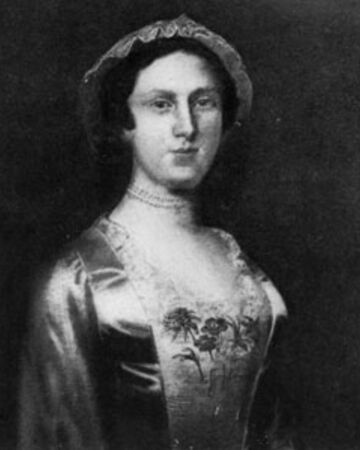
Theodosia Burr
Wife of Vice President Aaron Burr In 1763 Theodosia Bartow married James Marcus Prevost, a British Army officer with whom she had five children. They lived in Bergen County, New Jersey, in a home they named the Hermitage. In 1776 James Marcus was called back to active duty in the Revolutionary War, while Theodosia tried to keep their home from being confiscated by the American government. Meanwhile she began a relationship with a young American officer named Aaron Burr. After her husband’s death in 1781, 35-year-old Theodosia Prevost, with five children, married 25-year-old Aaron Burr. Childhood and Early Years Theodosious Bartow died in a carriage accident in Shrewsbury, New Jersey, in 1746 at age 34, while his wife Ann was…
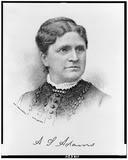
Abigail Adams
First Lady and Wife of Founding Father John Adams Abigail Adams (1744-1818) was the wife of President John Adams, the mother of President John Quincy Adams, and the second First Lady of the United States. As the Second Continental Congress drafted and debated the Declaration of Independence, Abigail began to urge John in her letters that the creation of a new form of government was an opportunity to make the legal status of women equal to that of men. The text of those letters became some of the earliest known writings advocating women’s rights. Young Abigail Adams Abigail Smith was born on November 11, 1744, at Weymouth, Massachusetts to the Reverend William and Elizabeth Smith. On her mother’s side, she…

Hannah Lee Corbin
Early Women’s Rights Advocate Hannah Lee Corbin, Virginia’s earliest known proponent of voting rights for women was born on February 6, 1728, in Westmoreland County, Virginia. Hannah was the oldest daughter of Hannah Ludwell Lee and Thomas Lee, a prominent member of the House of Burgesses and later acting governor of the colony. In 1717, Thomas Lee had purchased the land for Stratford Hall Plantation, and he had the brick Georgian Great House built during Hannah’s childhood years. Thereafter, the Lee family lived in the elegant mansion on the Potomac River, where Hannah received an education far superior to that of most young women of her day, studying alongside her brothers in Stratford Hall’s small brick schoolhouse. Intellectually curious, Hannah…
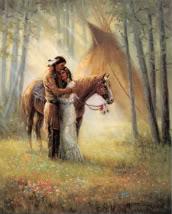
Cherokee Women’s Rights
Women’s Rights in Cherokee Society Image: Loving Sun Marianne Caroselli, Artist (I know the Cherokee did not live in teepees; I just love this painting.) In the early 18th century, the Cherokee existence was one marked by balance guided by oral tradition. Their belief in balance in all aspects of life didn’t leave room for a system of hierarchy that oppressed women. Men primarily assumed the roles of hunters, while women took responsibility for agriculture and gathering. At the time of European contact, the Cherokee controlled a large area of what is now the southeastern United States. Of the southeastern Indian confederacies of the late seventeenth and early eighteenth centuries (Creek, Chickasaw, Choctaw), the Cherokee were one of the most…
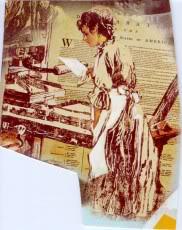
Mary Katherine Goddard
First Female Newspaper Publisher (1775) Mary Katherine Goddard (1738-1816) is famous for printing the first copy of the Declaration of Independence that included the names of all the signers. Like her younger brother William, Mary Katherine was educated by her mother, Sarah Updike Goddard, who taught them Latin, French and the literary classics. Mary Katherine’s father, Dr. Giles Goddard, was postmaster of New London, Connecticut, and the family was living there when Dr. Goddard died in 1757, leaving a sizable estate. William Goddard completed an apprenticeship in the printing trade, and when he came of age, the family moved to Providence, Rhode Island, where Sarah Goddard lent her son the money to begin a printing business – the first in…
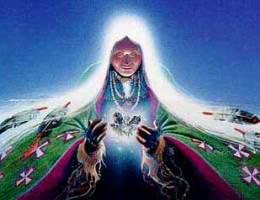
Iroquois Women
Women in Iroquois History Image: Jigonsaseh Head Clan Mother of the Iroquois The Iroquois were one of the most powerful Indian races, controlling land all the way down the eastern seaboard of North America and several hundred miles inland. A woman’s place in Iroquois culture was very different from that in European cultures. Iroquois women enjoyed social equality and respect that was not shared by colonial American women. The Iroquois Confederacy was composed of five different tribes, who banded together shortly before European contact. The tribes of the Iroquois Confederacy and other Northern Iroquoian-speaking peoples, including the Huron, lived in the region including what is now New York State and the Great Lakes area.
Frances Dana Gage
Writer, Abolitionist and Women’s Rights Activist Frances Dana Gage was a leading reformer, feminist and abolitionist. She worked closely with other leaders of the early women’s rights movement. She was among the first to champion voting rights for all citizens, without regard to race or gender. Childhood and Early Years On October 12, 1808, Frances Dana Barker was born in Union, Ohio. Her parents were among the first settlers in the United States Northwest Territory. A farmer’s daughter, Frances was educated at a log cabin in the woods, spun the garments she wore, made cheese and butter, and did outdoor chores. Frances made frequent visits to her grandmother, Mary Bancroft Dana, whose home was at Belpre, Ohio. Mary Dana was…
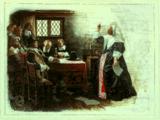
Margaret Brent
Women in Law: First Woman to Appear in Court Image: Margaret Brent before the Maryland Assembly Margaret Brent ranks among the most prominent women figures in early colonial history. Hailed as an early feminist who advanced the legal rights of women, Brent was the first woman in the American colonies to appear before a court of the Common Law to claim land in her own right or to pursue her own interests in court. She was also a significant founding settler in the early histories of the colonies of Maryland and Virginia. Margaret Brent was born around 1601 in Gloucestershire, England, into a wealthy Catholic family, one of thirteen children. She was an early American feminist, a major colonial landowner…